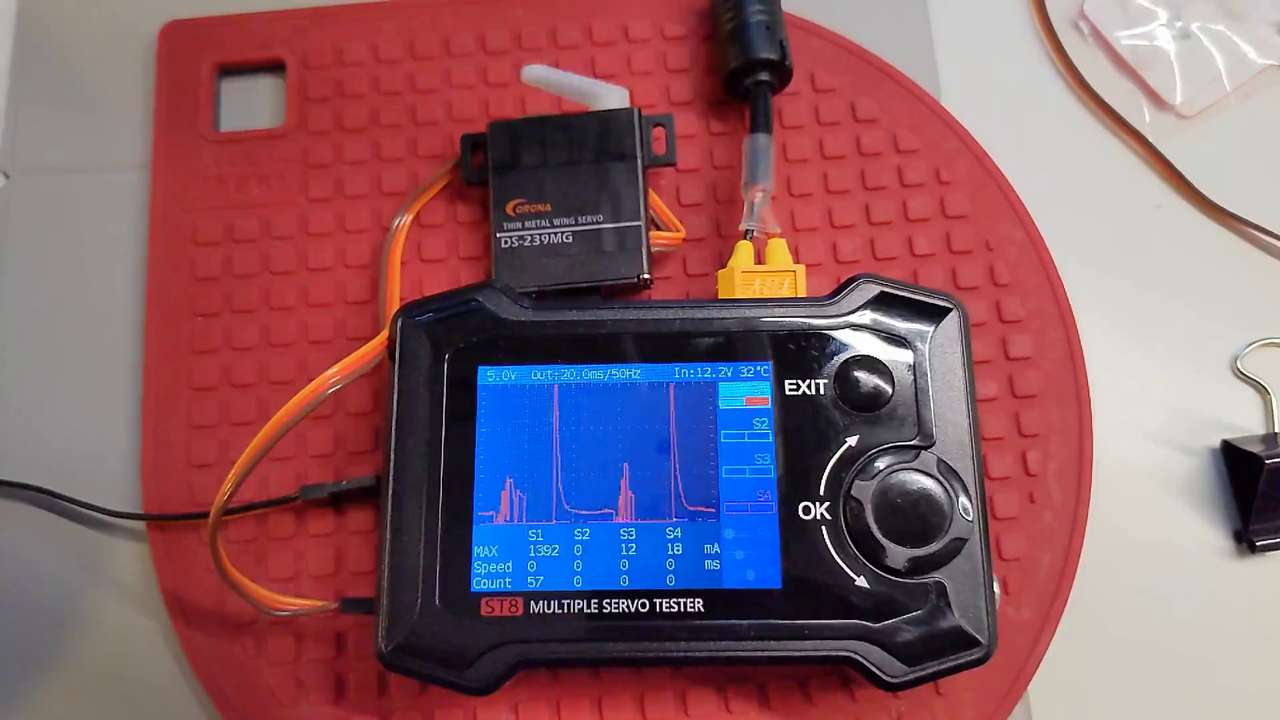Output Devices¶
Group Assignment¶
- Measure the power consumption of an output device
- Document your work to the group work page and reflect on your individual page what you learned
Group FAQ¶
- What is the point of the group excercise?
- Answer: Different output devices need different amounts of energy to function. You need to be able to choose suitable power source for your projects.
- Is it ok to use the LED in the hello board as an output device for this assignment?
- Answer: No, you need to do more.
Gold and Brass¶
Alan Han
I obtained a usb multimeter awhile back ~Nov 2020, which I forgot about! I’ll need to keep it closer in mind from now on; tools that don’t get used might as well not exist.
Based on measurements from plugging the Gold and Brass board into the usb multimeter, current draw appears to be anywhere from ~9 to 14mA. Since the multimeter is reading 5.12V, the wattage is anywhere from ~46mW to 71mW.
Hobby Servos¶
Dan Meyer
Measure Power¶
How much power is drawn when the servos are actuated. This will be somewhat difficult to measure, but I have some specialized tools to help me: The ToolkitRC ST8 Servo Tester The ST8 will allow me to see the current draw of my chosen servos displaying a current curve. I do know from experience that servos and motors can draw so much current they’ll brown out a microcontroller. It’s always best to power servos on their positive lead with a separate 5VDC rail that does not pass through the microcontroller at all. The PWM pulse like servo positioning signals are the only thing that should pass though the microcontroller. Common ground traces must be thick and also should lead directly to the 5VDC power source.
Let’s setup the ST8 Servo Tester and see what kind of power curves we get! All servo testing was performed at 5.0VDC and an output of 20.0ms/50Hz.
HiTec HS-422 Analog Servo¶
The HiTec HS-422 is a standard size analog servo with plastic gears. This servo if popular in robotics projects and medium sized radio control aircraft and cars. HiTec has excellent customer service and documentation of their servos. Here is the useful HiTec General Servo Information.
 Above: The sweep command of the servo is at a medium speed with a linear setting and a step 1us and speed 1ms. The max current draw is 573mA (2.865 watts).
Above: The sweep command of the servo is at a medium speed with a linear setting and a step 1us and speed 1ms. The max current draw is 573mA (2.865 watts).
 Above: The sweep command of the servo is at max pulse speed with a stage setting and Freq of 1Hz the max current draw is 935mA (4.675 watts). I would need to test more servos, but it looks like HiTec’s specs are off by 135mA compared to stall current specs.
Above: The sweep command of the servo is at max pulse speed with a stage setting and Freq of 1Hz the max current draw is 935mA (4.675 watts). I would need to test more servos, but it looks like HiTec’s specs are off by 135mA compared to stall current specs.
Corona DS-239MG Digital Servo¶
The Corona DS-239MG is a thin wing digital servo with metal gears. This servo is used mainly in small radio control gliders with thin wings and large control surfaces. Corona has limited documentation but it is sufficient.
 Above: The sweep command of the servo is at a medium speed with a linear setting and a step 1us and speed 1ms. The max current draw is 858mA (4.29 watts).
Above: The sweep command of the servo is at a medium speed with a linear setting and a step 1us and speed 1ms. The max current draw is 858mA (4.29 watts).
 Above: The sweep command of the servo is at max pulse speed with a stage setting and Freq of 1Hz the max current draw is 1.392A (6.96 watts)! I would need to test more servos, but it looks like Corona’s specs are way off on current draw for this servo! Corona has the current specified at: 300mA
Above: The sweep command of the servo is at max pulse speed with a stage setting and Freq of 1Hz the max current draw is 1.392A (6.96 watts)! I would need to test more servos, but it looks like Corona’s specs are way off on current draw for this servo! Corona has the current specified at: 300mA
Servo power summary¶
As can be seen just one servo can draw quite a bit of current, especially when commanded with a flinch reaction move from dead a start. For example the 1.3A draw of the digital servo is normal and very often an RC aircraft will have up to 8 of these servos and a total peak potential current draw of 10 Amps (50 watts)! This is why others and myself suggest: ALWAYS POWER SERVOS DIRECTLY FROM HIGH CURRENT BATTERY or DC SOURCE. Do not send power for servos through thin traces or microcontrollers. The signal to the servo of course can be routed to a microcontroller and through thin traces. Grounds should be common. Grounds to the servo should be direct or on a thick trace.
Batteries to power servos¶
Four Sanyo Eneloop NiMH AA batteries are one of my favorite power sources for small robots running up to four total servos. For high performance RC Aircraft it’s best to power your servos with a high quality Battery Eliminator Circuit (BEC) running off a high current LiPo flight or separate battery pack.